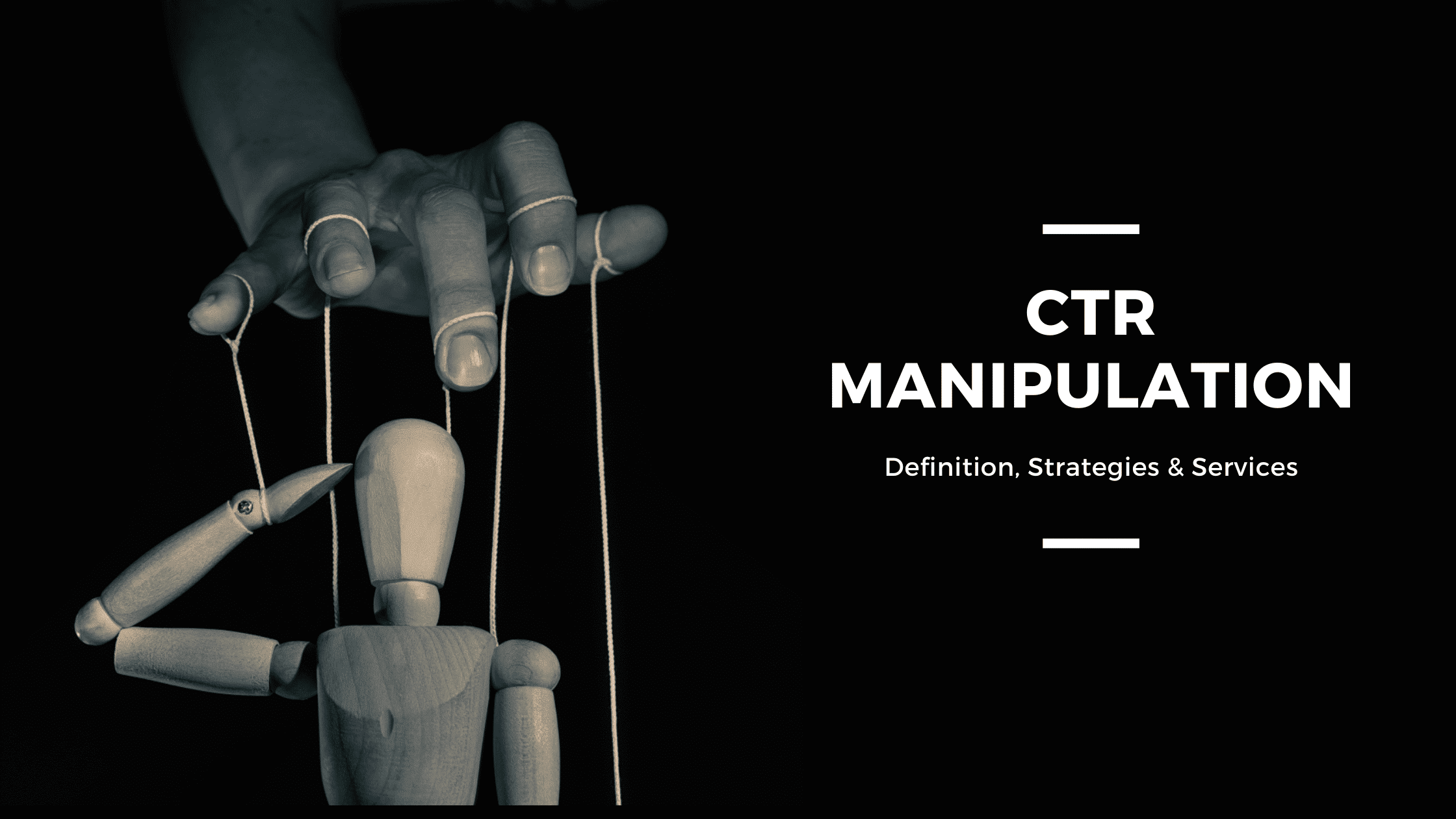Elevate Your Local Company with GMB CTR Manipulation Techniques
Wiki Article
Attaining Success With Targeted CTR Control
The optimization of click-through rates (CTR) is an essential endeavor for brand names intending to enhance their electronic presence and make the most of involvement. Targeted CTR adjustment incorporates a variety of techniques, from data-driven ad placements to the development of compelling web content tailored to specific target markets.Comprehending Click-Through Fees
Click-through rates (CTR) work as an essential metric in digital advertising and marketing, reflecting the performance of online content in driving individual interaction. This statistics is computed by dividing the number of clicks an advertisement or link receives by the overall number of perceptions, expressed as a percent (GMB CTR Manipulation). A higher CTR suggests that the material reverberates well with the target market, motivating them to actRecognizing CTR is crucial for marketers aiming to optimize their campaigns. Various aspects influence CTR, including advertisement placement, style, and the relevance of the material to the target market's passions. For example, engaging headlines and aesthetically appealing photos can significantly improve the possibility of users clicking on a web link.
Additionally, the context in which the content is provided plays an essential role in identifying CTR. Ultimately, a thorough understanding of CTR equips online marketers to refine their methods, guaranteeing that digital projects attain their wanted results effectively.
Value of CTR Control
In the competitive landscape of electronic advertising and marketing, the control of click-through prices (CTR) has come to be a crucial technique for boosting project efficiency. CTR acts as an essential performance indicator, mirroring the effectiveness of on the internet ads and material in drawing in customer involvement. A higher CTR not only signifies better interest however also can lead to improved search engine rankings and reduced cost-per-click (CPC) prices, thereby enhancing general advertising and marketing spending plans.The importance of CTR adjustment hinges on its ability to notify online marketers about consumer choices and actions. By assessing CTR information, businesses can determine which elements of their projects reverberate most with their target audience. This insight enables more enlightened decision-making and the allowance of resources to one of the most effective channels.
Furthermore, effective CTR control cultivates a competitive advantage. Therefore, grasping CTR manipulation is not merely advantageous; it is vital for attaining continual success in digital advertising efforts.
Methods for Targeted CTR
Achieving targeted click-through rates (CTR) calls for a critical strategy that encompasses different techniques customized to details audience sectors. One effective method is enhancing ad placements by utilizing data analytics to determine high-performing networks. By concentrating efforts on these channels, marketing professionals can improve presence and increase involvement.Another vital technique is crafting engaging headings and calls to action (CTAs) A/B screening various variants can expose which combinations resonate most with the target market, consequently driving greater CTR. Furthermore, including aesthetic aspects such as distinctive photos or videos can substantially enhance charm, making content extra appealing and shareable.
Personalization additionally plays an essential role; making use of customer information to create tailored web content can cultivate a feeling of importance, encouraging clicks. In addition, leveraging social evidence through testimonials and user-generated material can construct depend on, ultimately enhancing CTR.
Studying User Behavior
 Comprehending user behavior is vital for maximizing advertising and marketing approaches and improving overall performance. By analyzing exactly how individuals engage with web content, marketing professionals can acquire valuable understandings into choices, inspirations, and discomfort points. This understanding makes it possible for the growth of even more targeted projects that reverberate with specific target market sectors.
Comprehending user behavior is vital for maximizing advertising and marketing approaches and improving overall performance. By analyzing exactly how individuals engage with web content, marketing professionals can acquire valuable understandings into choices, inspirations, and discomfort points. This understanding makes it possible for the growth of even more targeted projects that reverberate with specific target market sectors.To properly examine user behavior, different devices and methods can be employed. Internet analytics platforms provide data on individual involvement metrics such as click-through prices, bounce rates, and time invested on page. Heatmaps and session recordings allow online marketers to picture customer communications, disclosing which aspects stand out and which might be ignored.
Additionally, customer feedback via surveys and comments forms can supply qualitative understandings, boosting the understanding of customer sentiment and complete satisfaction. Segmenting customers based on behaviors, demographics, and passions can additionally fine-tune targeting efforts, customizing web content to meet varied demands.
Ultimately, constant analysis of user actions is crucial for adapting advertising strategies in real-time. As user trends advance, staying attuned to these modifications guarantees that campaigns continue to be pertinent and effective, promoting a much deeper connection with the target audience. This fundamental understanding establishes the stage for the effective application of targeted CTR adjustment strategies.
Measuring Success and Readjusting Techniques
Gauging success in targeted marketing campaigns requires a critical strategy that incorporates efficiency metrics with continuous evaluation. Key performance signs (KPIs) such as click-through prices (CTR), conversion rates, and client purchase prices need anchor to be checked helpful hints continually to gauge the performance of adjustment strategies. By establishing a baseline, marketing experts can assess changes in CTR and recognize trends that indicate effective involvement or possible imperfections.Frequently assessing these metrics enables for the timely adjustment of approaches. If a specific project shows a significant drop in CTR, it might signal the demand for innovative modifications or a reevaluation of targeting criteria. Using A/B testing can even more improve methods by comparing variants of ads or landing web pages, supplying understanding into what resonates finest with the target market.
Furthermore, integrating qualitative responses through surveys or customer interviews can supplement quantitative data, supplying a comprehensive sight of target market assumption. Ultimately, the ability to iteratively examine and improve strategies based upon real-time information promotes a much more receptive advertising and marketing technique, guaranteeing that campaigns remain lined up with business purposes and audience preferences. This adaptive approach is vital in achieving continual success in targeted CTR adjustment.
Final Thought
To conclude, targeted CTR adjustment is crucial for enhancing electronic marketing initiatives. By understanding click-through prices and using calculated strategies, brand names can successfully improve user involvement and drive conversions. Continual analysis of user behavior and diligent measurement of efficiency indications assist in timely changes, ensuring placement with customer choices. Ultimately, successful CTR adjustment not only enhances presence but likewise cultivates trust and see here integrity, consequently contributing to sustained growth in open markets.
 Targeted CTR manipulation encompasses an array of approaches, from data-driven ad positionings to the development of engaging material tailored to specific audiences.Click-through prices (CTR) serve as a crucial metric in digital marketing, reflecting the performance of on-line web content in driving user involvement. A higher CTR shows that the web content reverberates well with the target audience, motivating them to take action.
Targeted CTR manipulation encompasses an array of approaches, from data-driven ad positionings to the development of engaging material tailored to specific audiences.Click-through prices (CTR) serve as a crucial metric in digital marketing, reflecting the performance of on-line web content in driving user involvement. A higher CTR shows that the web content reverberates well with the target audience, motivating them to take action.CTR offers as a crucial efficiency sign, showing the efficiency of on-line advertisements and material in drawing in individual engagement.In conclusion, targeted CTR manipulation is essential for enhancing digital advertising and marketing initiatives.
Report this wiki page